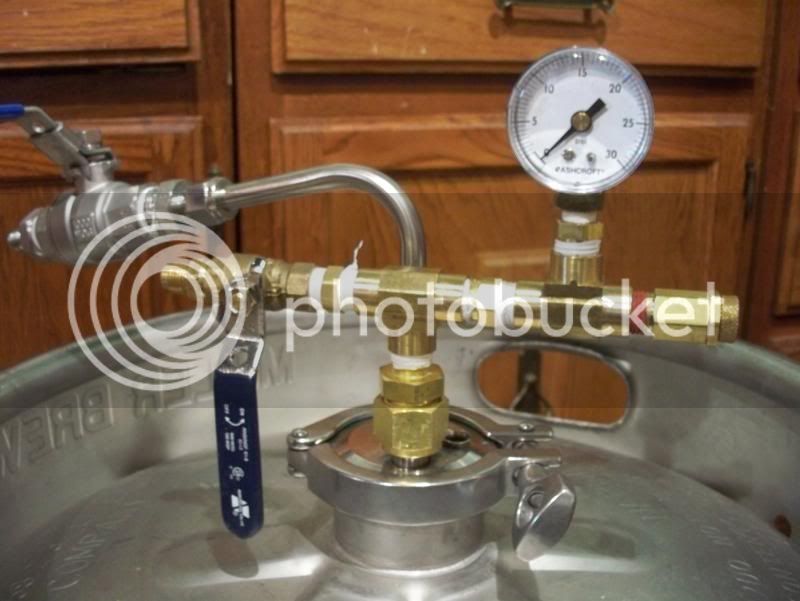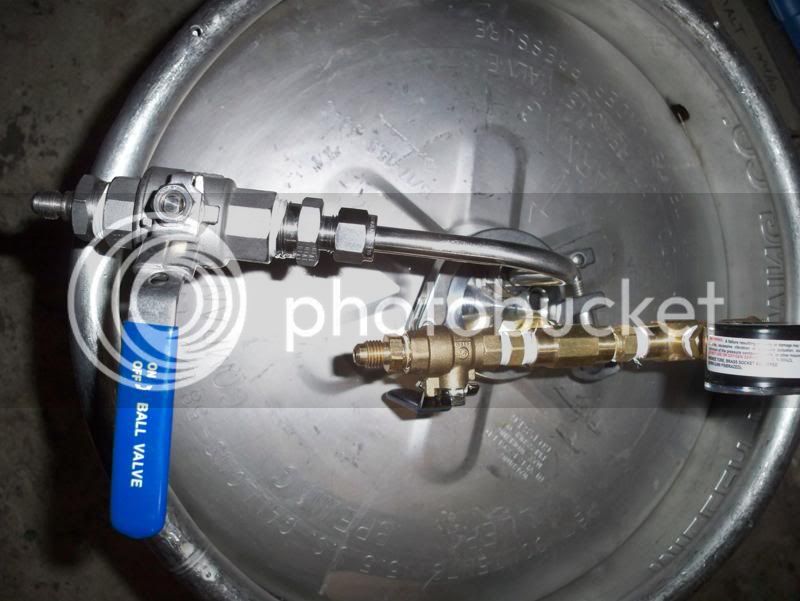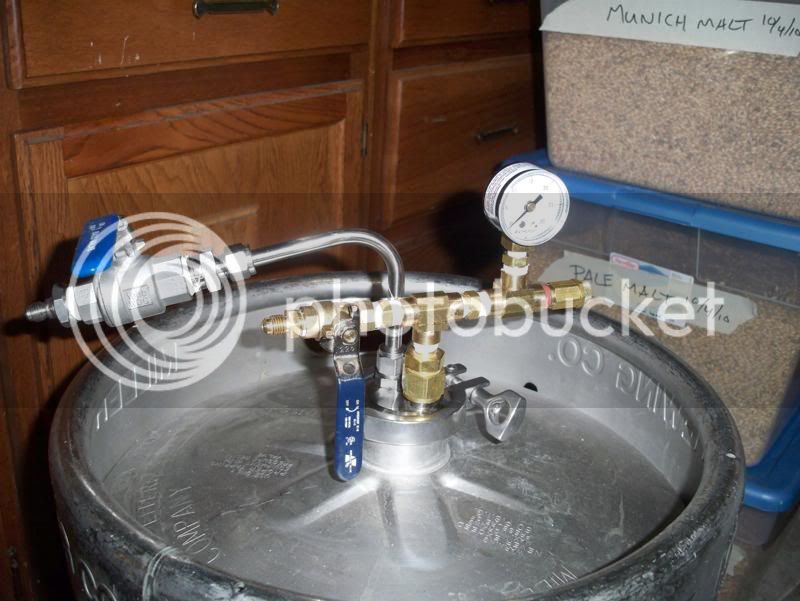OK guys, pulling the trigger. All numbers are from BeerSmith. I have 13 gallons of water in my HLT heating to 168*F right now for my 154*F wanted 10 gallon mash rest (.4 gallons/# of grain). I'm mashing and boiling a 12 gallon recipe of higher gravity for a larger 15 gallon end batch after the boil. City water is coming out at 65*F, so perfect to get me below my room temperature for an easy rise to my wanted fermentation temperature of 70*F. After the 2 hour mash (mashed thin, but high), I will sparge with 8 gallons of 185*F water to get me to 15 gallons in my kettle. I know, kinda tight on the kettle space, but I have done it before with no mess. You just have to be careful and ready for the eruption

. I'm hitting the 90 minute boil with 2oz (9.1%AA) Amarillo @ 90, 1oz @ 30, and 1oz @ 10 minutes for a IBU of 43.1 (just 3ish points over the high limit of the style). This also gives me a OG of 1.061, FG of 1.016, IBU's as mentioned, ABV of 5.9%, and SRM of 27.1. Of course, after blending, I will have a OG of 1.049, FG of 1.013, IBU of ~37 (probably more like 33-35), ABV of 4.7%, and SRM of ~23.
Recipe is as follows:
10# (40%) Weyermann Munich Type 1
10# (40%) Weyermann Pale Ale Malt
2.5# (10%) Caramel 40*L
1.5# (6%) Chocolate 400*L
1# (4%) Weyermann Wheat
Now, we just wait and see....












